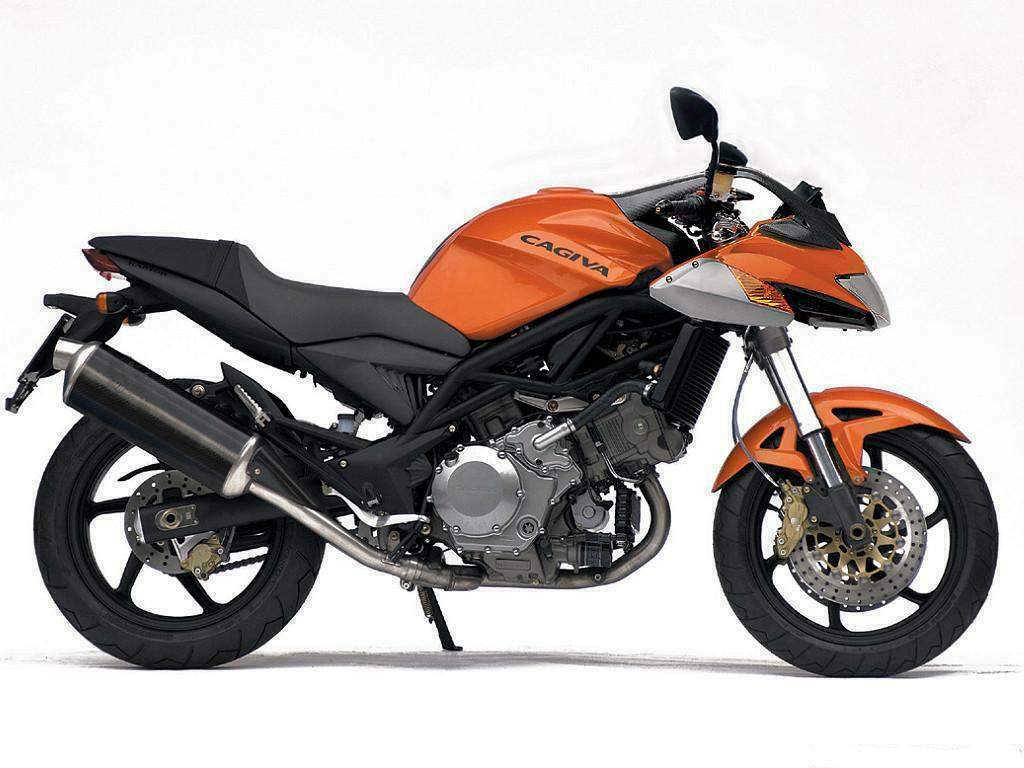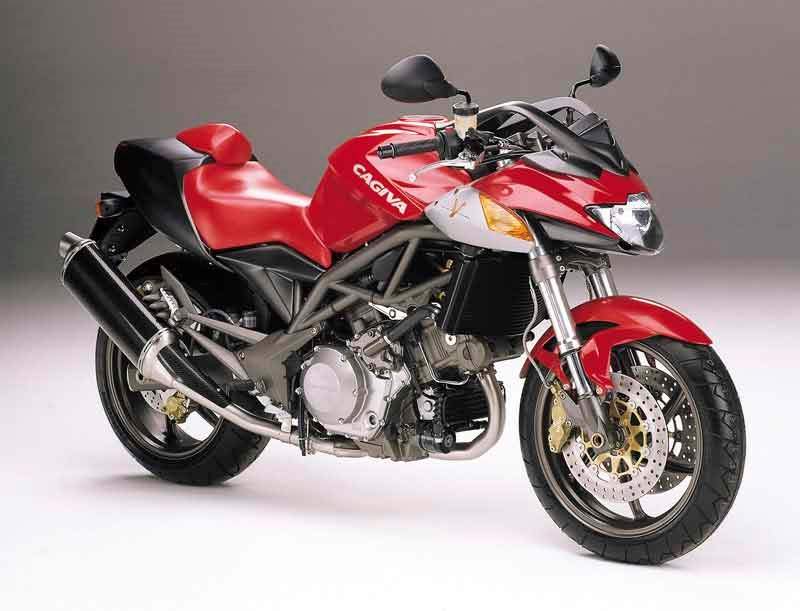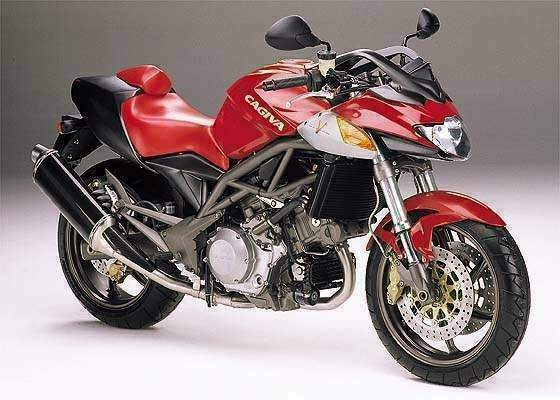When I returned the 650 V-Raptor
(see our review of Cagivaís commuter with attitude) to importers
Italmoto of Germiston in Gauteng, I was lucky enough to get a
quick spin on its bigger brother, the V-Raptor 1000 powered by
the rip-snorting 996cc V-twin out of Suzukiís TL1000 canyon
carver.
This is an altogether more serious proposition set up in
inimitable Cagiva fashion with a cavernous airbox and short,
stubby carbon tailpipes. It delivers 82kW of stomp and speaks
with authority.
The 98x66mm twin pulls strongly from about 3000rpm but steps up
on to the cam when the tacho needle points straight up at seven
and gets a little out of hand for big-city traffic
.
Opportunities to use so much power are few and far between in
the urban maze.
The big Raptor is as out of place as a pit-bull in a poodle
parlour around town and needs a steady right hand for smooth
urban motion at legal speeds thanks to the door-slamming
jerkiness common to most fuel-injection systems at small
throttle openings.
But give it a gap, or some freeway to play with, and itíll show
you what big twins are all about Ė instant, effortless response
and eye-squishing acceleration. Itíll hit 220 in half a
kilometre (donít ask me where) with at least another 30 to come.
Above 8000rpm the motor gets distinctly vibratious; this is,
after all, a rigidly mounted litre-class twin and in true vee
fashion the shakes are part of the riding experience.
As noted on the 650 (and Apriliaís RS250), the gearboxes on
Suzuki motors sold by the company to other marques are much
tighter than those it assembles for itself

. On
the one-litre Raptor the change is hefty and solid, discouraging
clutchless shifts except at high revs. Even then they were less
than seamless; just as well, then, that the clutch is light,
positive and abuse-proof Ė it gets used a lot.
This muscular motor hangs from a trellis frame which a first
glance looks very similar to that of the 650 but which
incorporates a neat three-point upper mounting to compensate for
the unequal coefficients of expansion of steel and aluminium Ė
needed because the upper engine mount is on the forward cylinder
head rather than on the crankcase.
The rest of the trellis is basically the same as on the smaller
bike and itís a tribute to the soundness of the design that
itíll handle more than 80kW without tying itself in knots.
The frame is a little wider to accommodate the bigger motor; all
to the good as the bigger bike has a better pilotís seat that
doesnít place as much pressure on oneís backside. The pillion,
however, is the same little padded hump on which a lady friend
politely declined to recline.
The suspension is the same as the smaller machine with spring
and damping rates adjusted to suit the extra heft. The only
adjustment is for preload on the rear Sachs monoshock; you ride
the 43mm upside-downies the way Marzocchi issued them, which is
very good indeed.
The bike is as steady as a rock, even beyond 200km/h, and has
less tendency to shake its head on full-tilt upchanges than does
its sibling. This is probably due to somewhat more conservative
geometry Ė I suspect mostly aimed at trying to keep the front
wheel on the tar. It also doesnít turn in with the same agility,
as some more conservative riders prefer.
The brakes are the same as on the 650 though with about 10% more
mass to haul in it takes a firm squeeze to stop. Because of this
the feedback through the lever is not as precise, even with
braided stainless brake lines, and itís easier to lock the front
wheel on the 1000.
The neat little screen in these photos is unique to SA. It was
designed by and made for Marco Liberatore of the local
importers. Amazingly, itís held on by nothing more than six
patches of Velcro each no bigger than a large postage stamp
because the slipstream actually pushes it more firmly into place
the faster you ride.
The big V-Raptor requires more finesse to ride than its more
easygoing little brother. Itís a big and seriously muscular
machine and will give the Bandits and XJRs of this worlds a
kicking in the right hands. But more than that, itíll take you
out in the twisties on a Sunday morning and stay with the
race-replicas through you favourite corners.
Donít be fooled: under the weird styling thereís a very
competent motorcycle.
Source
By Dave Abrahams



